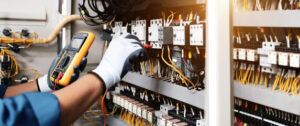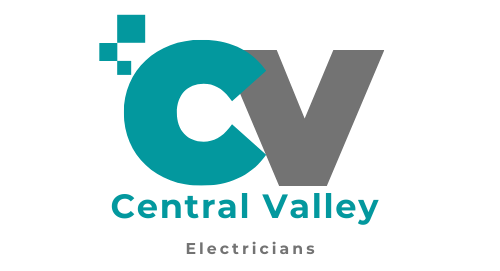Electrical Professionals In Construction is one of the most crucial aspects of any project. But, it is also one of the most dangerous. Workers who use power tools are exposed to many hazards and risk gruesome burns and even deadly electrocution.
Fortunately, some steps can be taken to ensure the safety of everyone involved. These tips include using surge protectors and voltage regulators.

The tools of the trade on a construction site are powered by electricity, but that power needs to come from somewhere. Traditionally, builders used generators to provide temporary power for their projects. However, there are several other options for getting power on the job site.
Whether you need to keep equipment running while a new building is being constructed or want to power lighting and appliances in an existing structure as part of a remodel, temp power can be an essential tool for your company. The best option for your project is to work with a power company that can help you determine the power solutions that will be most effective for your unique situation. During the initial planning stage, a supplier will visit your site to inspect it and determine what power needs to be supplied. This typically includes how much power you need in both volts and amps, what areas of the site require power outlets, and how long you anticipate needing the power.
Once you have agreed on a plan, your power supplier will create a design map for how the system will be organized at the job site. The team may also need to visit the site again to finalize the layout. They will also need to apply for any necessary permits and schedule inspections. Having a power provider that understands your local permitting process will help ensure the system is installed properly and up to code.
Once the power is up and running, it’s important to follow proper safety procedures while working with it. The Occupational Health and Safety Administration states that contact with electricity is one of the leading causes of workplace fatalities. To reduce this risk, make sure all cords are kept clear of vehicle traffic and that you regularly inspect them for damage. If you see something that looks out of the ordinary, notify a supervisor immediately. Also, ensure all workers are trained in properly using electrical tools and follow all job rules regarding temporary power supplies.
A switchboard is a power distribution system that divides incoming electric currents into smaller circuits. It can also re-direct and distribute the power to different areas or devices. It can be in a single panel, assembly panel, or structural frame format, and it contains various switches, overcurrent protective devices, circuit breakers, and buses.
The power supply to the switchboard is done through a circuit feeder, and it can be sourced from a transformer or directly from the main line. It’s also possible to have multiple feeds coming in, which is useful if the system has to serve more than one area.
Switchboards can be found in commercial and industrial facilities and large residential buildings. They can be used for powering appliances, lighting, and plug sockets, or they may be dedicated to supplying larger electrical equipment. They can have additional features like metering to record and display power consumption.
It’s important to know how these boards work to keep workers safe. The most important element of a switchboard is the main supply, which is normally from an underground or overhead wire connected to the main low-voltage switchboard, also known as a service entrance.
Then, the main power is channeled into the switchboard, and from there, it is distributed to each circuit by a bus bar. This bus bar can be extended horizontally and is called a through-bus. Some of these systems have an adjustable ampacity, which can be tapered to reduce downstream capacity as the load demands diminish.
A switchboard will have several power outlets, each with a breaker to protect against overloading. Having an isolating switch that disconnects and isolates all supplies from the board is also a good idea.
A sign should be placed on a switchboard that reads, “DANGER – LIVE PARTS IN ENCLOSURE,” this should be displayed anywhere that extra attention needs to be paid, such as when lifting covers. An additional sign indicating “After Hours Supply – Do Not Switch Off” should be displayed on the switchboard for circuits supplying equipment outside of normal business hours.
In power transmission and distribution, overhead lines carry large amounts of electric energy over long distances. Overhead power lines are usually constructed from steel wires or aluminum cables suspended from poles and towers. They can also contain equipment such as transformers, fuses, and reclosers. Power lines can be buried underground instead of being strung overhead. Still, this approach requires more expensive infrastructure and is more susceptible to outages caused by bad weather, high winds, or tree limbs falling on the lines.
The structure of an overhead line depends on its voltage and purpose. Low-voltage lines are usually bare conductors carried on glass or ceramic insulators or an aerial bundled cable system. Medium-voltage lines use a combination of wooden or tubular steel poles and lattice-type steel towers or pylons. High-voltage lines are often built on steel towers and ring structures with concrete bases.
These structures must be designed to support the weight of the conductors and their insulators and to withstand both the normal operating voltage and surges due to switching or lightning. Insulators are generally pin-type, which supports the conductor above the structure, or suspension-type, which hangs below it.
Today’s most common conductors used for overhead transmission are aluminum conductor steel reinforced (ACSR) or all-aluminum-alloy conductors. These have about half the resistance of a comparable copper conductor of the same diameter and are more cost-effective. Copper is still widely used at lower voltages and for grounding.
Overhead lines are often a form of visual pollution and may require special construction to minimize their impact, including adding guy wires to counteract forces on the lines that can cause them to sag. They are also more vulnerable to damage and outages due to weather, vehicle accidents, or trees falling on them than underground lines.
Accurately allocating overhead costs is important for a construction business to be profitable. There are several different overhead allocation methods, but the key is to find a balance that ensures that each job shares in the overall costs and benefits of the business and that the amount each pays is proportional to its share of the total burden.
Construction workers must follow proper safety protocols, whether working on a temporary power supply or a permanent connection. These include ensuring that all equipment operates correctly and that suitable personal protective equipment is worn. Also, workers should always unplug electrical equipment when it is not in use to avoid accidental contact with a live circuit. It is also important to watch for any signs of damage, such as cracks, frayed wiring, or exposed insulation.
In addition to implementing comprehensive safety plans, construction companies should conduct regular inspections and training sessions to ensure that all workers know the latest electrical safety rules. This can help to minimize the likelihood of an electrical incident causing serious injury or death on the job site.
All power lines should be kept at least ten feet from any ladders, scaffolding, tools, vehicles, or materials on a construction site. Suppose a worker comes into proximity to overhead power lines. In that case, they should call their local electricity utility company and await instructions before clearing the line or moving any equipment.
Workplaces should be equipped with RCD protection to minimize the risk of electric shock. This device monitors the current flow through a circuit and shuts off the power supply in many situations that could otherwise cause an electric shock, such as if someone touched a live wire or cable.
Electrical incidents are often preventable but can be very serious if not addressed quickly and effectively. Companies can significantly reduce the number of electrical incidents on their construction sites by implementing comprehensive safety plans, conducting regular training, and utilizing toolbox talks. These simple steps can save lives and provide peace of mind for everyone involved.
